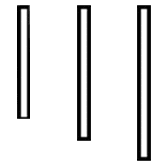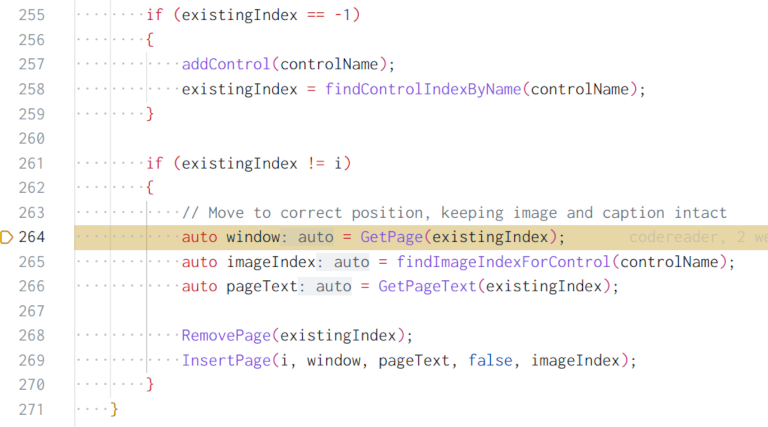I'm also seeing an assertion failure, although it doesn't seem to have anything in common with what other people have posted. This appears at startup before the main window is shown, and appears to be fatal (attempting to Continue just produces the same assertion again).
ASSERT INFO:
../src/aui/auibook.cpp(2270): assert "page_idx < m_tabs.GetPageCount()" failed in GetPage().
BACKTRACE:
[1] wxAuiNotebook::GetPage(unsigned long) const
[2] sigc::internal::signal_emit0<void, sigc::nil>::emit(sigc::internal::signal_impl*)
[3] sigc::signal0<void, sigc::nil>::emit() const
[4] module::ModuleRegistry::loadAndInitialiseModules()
[5] radiant::Radiant::startup()
[6] wxEvtHandler::ProcessEventIfMatchesId(wxEventTableEntryBase const&, wxEvtHandler*, wxEvent&)
[7] wxEvtHandler::SearchDynamicEventTable(wxEvent&)
[8] wxEvtHandler::TryHereOnly(wxEvent&)
[9] wxEvtHandler::ProcessEventLocally(wxEvent&)
[10] wxEvtHandler::ProcessEvent(wxEvent&)
[11] wxEvtHandler::ProcessPendingEvents()
[12] wxApp::DoIdle()
[13] g_main_context_dispatch
[14] g_main_loop_run
[15] gtk_main
[16] wxGUIEventLoop::DoRun()
[17] wxEventLoopBase::Run()
[18] wxAppConsoleBase::MainLoop()
[19] wxEntry(int&, wchar_t**)
[20] __libc_start_main
More info from LLDB (since the built-in stacktrace seems to miss out a lot of function calls):
frame #10: 0x00007ffff6a9eeca libwx_gtk3u_aui-3.0.so.0`wxAuiNotebook::GetPage(unsigned long) const + 106
frame #11: 0x0000555555d4f768 darkradiant`ui::PropertyNotebook::restoreState(this=0x000055555611c490) at PropertyNotebook.cpp:264:34
frame #12: 0x0000555555d3f7b6 darkradiant`ui::AuiLayout::restoreStateFromRegistry(this=0x0000555557179c10) at AuiLayout.cpp:654:36
frame #13: 0x0000555555d46817 darkradiant`ui::MainFrame::construct(this=0x00005555560c53a0) at MainFrame.cpp:271:38
frame #14: 0x0000555555d46680 darkradiant`ui::MainFrame::postModuleInitialisation(this=0x00005555560c53a0) at MainFrame.cpp:211:11
frame #15: 0x0000555555d4c024 darkradiant`sigc::bound_mem_functor0<void, ui::MainFrame>::operator(this=0x0000555556cd1258)() const at mem_fun.h:1991:48
frame #16: 0x0000555555d4ba80 darkradiant`sigc::adaptor_functor<sigc::bound_mem_functor0<void, ui::MainFrame> >::operator(this=0x0000555556cd1250)() const at adaptor_trait.h:256:20
frame #17: 0x0000555555d4b22c darkradiant`sigc::internal::slot_call<sigc::bound_mem_functor0<void, ui::MainFrame>, void>::call_it(rep=0x0000555556cd1220) at slot.h:483:35
frame #18: 0x0000555555aec9e2 darkradiant`sigc::internal::signal_emit0<void, sigc::nil>::emit(impl=0x0000555556a31300) at signal.h:798:79
frame #19: 0x0000555555aee4a8 darkradiant`sigc::signal0<void, sigc::nil>::emit(this=0x0000555556163398) const at signal.h:2804:32
frame #20: 0x00007fffeba2acfb libradiantcore.so`module::ModuleRegistry::loadAndInitialiseModules(this=0x0000555556163320) at ModuleRegistry.cpp:192:32
frame #21: 0x00007fffeba8bc87 libradiantcore.so`radiant::Radiant::startup(this=0x00005555562af760) at Radiant.cpp:97:58
frame #22: 0x0000555555be315f darkradiant`RadiantApp::onStartupEvent(this=0x00005555560a4660, ev=0x00005555562dc8d0) at RadiantApp.cpp:230:30
This is the actual line of code which fails in PropertyNotebook.cpp. It seems that existingIndex is actually -1 here.




 4
4




 1
1



